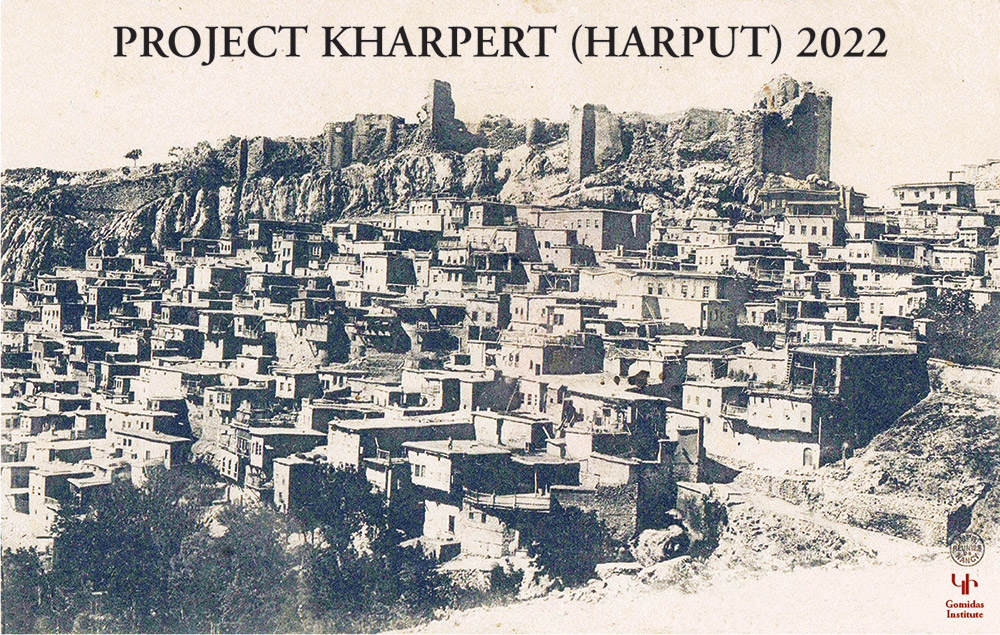Project Kharpert 2022
 17 September 2022
17 September 2022
Gomidas Institute has launched a new initiative to engage Turkish authorities renovating the historic city of Kharpert (Harput). To date, the renovation project, which seeks UNESCO World Heritage Site status, does not acknowledge the Armenian contribution to the development of the city over the centuries. The Gomidas Institute is offering its good council to Turkish authorities to work towards a balanced project that reflects the 'just memory' of Kharpert.
"We have offered our help in good faith and we will be following up on the developments that are underway," said Ara Sarafian of the Gomidas Institute. "We already have goodwill and support from many quarters, including Kharpertsi [Harputlu] Armenians, Turks, and Kurds, as well as others across the world."
The Gomidas Institute has already made its opening statement drawing attention to some of the issues at hand (see attached text). It is now approaching Turkish authorities directly, before the end of September 2022.
If you would like to get involved in the Gomidas Institute's Kharpert 2022 Initiative, please contact the institute through its website or FaceBook page.
PROJECT KHARPERT 2022
Kharpert (Harput) has been a centre of Armenian life and civilisation for centuries. On the eve of WWI, over a third of the city was composed of ethnic Armenians, with their distinct identity and culture. They inhabited several neighbourhoods in the eastern and western parts of the city. They were an industrious community and contributed to the prosperity of the region.
Much of the Armenian neighbourhoods of Kharpert were destroyed during WWI (they were ransacked or torn down for firewood), and other parts of the city were later destroyed by earthquake, so that Kharpert was abandoned by the 1930s. However, in recent years, the city was gradually rebuilt and landscaped as a touristic centre. Unfortunately, this revival has been selective and only reflects Kharpert’s Muslim-Turkic heritage. While mosques, medreses, türbes (Islamic tombs) and other buildings have been rebuilt, Armenian sites of comparable importance, have been left in ruins. The Armenian neighbourhoods of the city have been levelled and ploughed under.
Alongside the revival of Kharpert as a touristic centre, the textual representation of the city has also been selective. The signposting of the city, touristic literature, and other written texts do not acknowledge the city's Armenian past, or simply pay lip service to it.
In 2018, Turkish authorities applied to list Harput [Kharpert] as a UNESCO World Heritage Site with no references to Armenians (the word Armenian does not appear once in the application).
The current revival of Kharpert needs to be more sensitive to the city's multi-cultural past and include the following steps:
* Signpost and protect the two remaining Armenian churches in the east and west of the city – i.e Sourp Garabed and Sourp Hagop.
* Identify the location of Kharpert's main Armenian church, Sourp Sdepanos, which has been levelled to the ground and turned into a park.
* Acknowledge Armenians in official literature describing the city’s history, e.g. in the local municipality’s publications.
* Resubmit the Turkish application to recognise Harput (Kharpert) as a UNESCO World Heritage Site with references to Armenians.
The Gomidas Institute is an independent, academic organisation, dedicated to modern Armenian studies. Its activities include research, publications, and outreach programmes. In recent years, the Institute has engaged in truth and reconciliation initiatives in Turkey
« Back